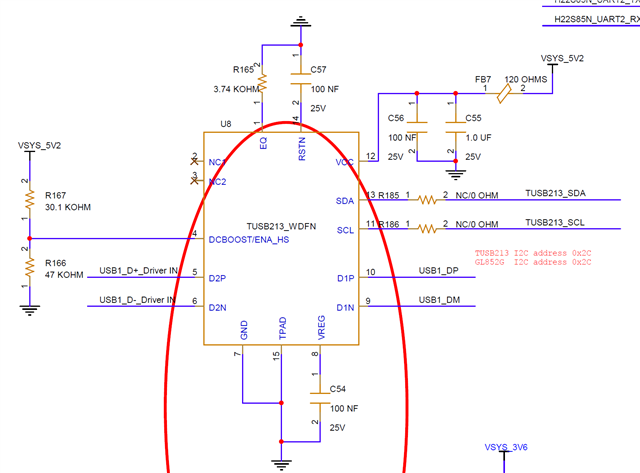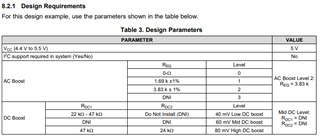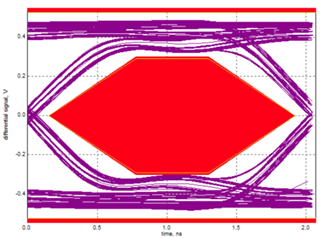Other Parts Discussed in Thread: TUSB217, TUSB216, TUSB216I
Hi,
We are currently using TUSB213 in our prototype to improve our USB signal eye diagram. After applying some DC and AC gain with the signal conditioner, we are able to pass both near and far end test. However, our device can no longer connect to the USB host (PC) via a USB hub. We have tried different USB hubs and different USB cables (including different cable length) and the results are consistent. We can still connect to the PC if we connect directly to the PC's USB port.
Strange thing is if we don't apply any DC and AC gain, even though the eye diagram looks bad but we don't have any issue connecting to the host via direction connection or USB hub.
I have attached the USB analyzer log below. Looks like the host was having trouble identify the speed of the device when we are connecting via a USB hub.
Here is a snapshot of our schematic: It is in non I2C mode, the DC gain is set to high and the AC gain is set to 2.
Please let us know if you have any suggestion for us to try. Thank you.
PB1 USB analyzer log (direct USB connection) - Passed.csvPB1 USB analyzer log (USB connection via USB hub) - Failed.csv



